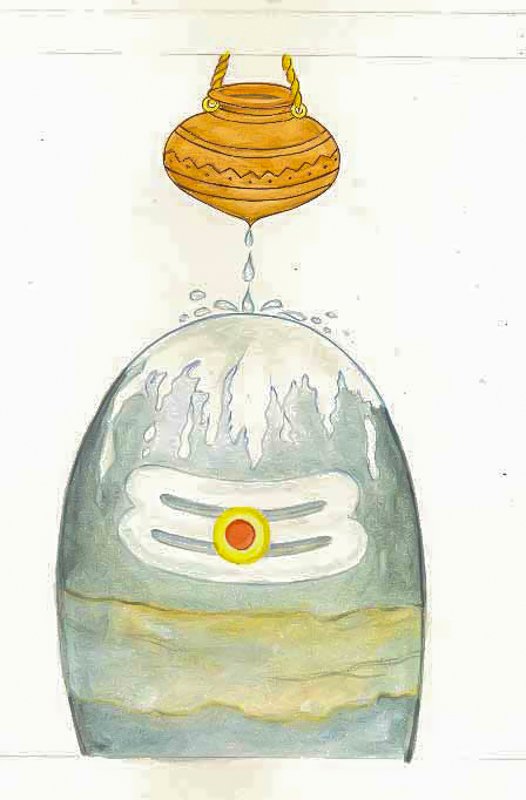Pillar Six
Artwork by A. Manivelu
Top

NORTH FACE:
Flame of the ForestThis is the tree and flower known as the Flame of the Forest (Butea Monosperma). The species is native to tropical and subtropical parts of the Indian Subcontinent and Southeast Asia. It is used for timber, resin, fodder, medicine, and dye. The wood is dirty-white and soft. Being durable under water, it is used for well-curbs and water scoops. Spoons and ladles made of this tree are used in various Hindu rituals to pour ghee (clarified butter) into the fire. Good charcoal can be obtained from it. The leaves were used by earlier generations of people to serve food instead of plastic plates.

EAST FACE:
TripundraThe tripundra or “three marks” is shown here. It is the Saivite sectarian mark, consisting of three horizontal lines of vibhuti (holy ash) on the brow, often with a dot (bindu) at the third eye. The three lines represent the soul’s three bonds: anava, karma and maya. Holy ash, made of burnt cow dung, is a reminder of the temporary nature of the physical body and the urgency to strive for spiritual attainment and closeness to God.

SOUTH FACE:
SadasivaThis is Sadasiva, God Siva with five heads representing his five powers of creation, preservation, dissolusion, and reavealing and concealing grace.

WEST FACE:
Hibiscus FlowerThe official flower of the state of Hawaii and here a major species for making offerings in the temple.
1 of 4
Middle

NORTH FACE:
Guru WorshipHere a devotee touches the feet of the satguru in reverential worship. Guru literally means “weighty one,” indicating an authority of great knowledge or skill. The term can describe a teacher or guide in any subject, such as music, dance, sculpture, but especially religion.

EAST FACE:
SivalingamThis is the Sivalingam. Above is a small metal pot with a hole in it, through which water drips for many hours, bathing the holy icon. Lingam literally means “mark,” “token” or “sign of Siva.” The most prevalent emblem of Siva, found in virtually all Siva temples. A rounded, elliptical, aniconic image, usually set on a circular base, or pitha, the Sivalingam is the simplest and most ancient symbol of Siva, especially of Parasiva, God beyond all forms and qualities. Lingas are usually of stone (carved) or naturally existing, swayambhu, such as shaped by a swift-flowing river, but may also be of metal, precious gems, crystal, wood, earth or transitory materials such as ice.

SOUTH FACE:
SangamSangam is literally an “association; fellowship.” It speaks of coming together in a group, especially for religious purposes. Here a band of devotees hold one another’s arms in an act of togetherness and support of one another. It is one of four major defining terms of Saiva Siddhanta, the other three being guru, Linga and valipadu.

WEST FACE:
ValipaduThis is worship, called valipadu in Tamil, which means “ritual worship; revering, following.” The acts of adoration of the Divine, expressed in many practices and ways. It is one of four major defining terms of Saiva Siddhanta, the other three being guru, Linga, sangam.
1 of 4
Bottom

NORTH FACE:
VamadevaVamadeva literally means “pleasant; beautiful; benignant; striving after.” This is a form of God Siva as Preserver. One of the five faces of Panchabrahma (Sadasiva).

EAST FACE:
GajariThis is a form of God Siva known as Gajari. He wears the skin of a rogue elephant.
1 of 2
